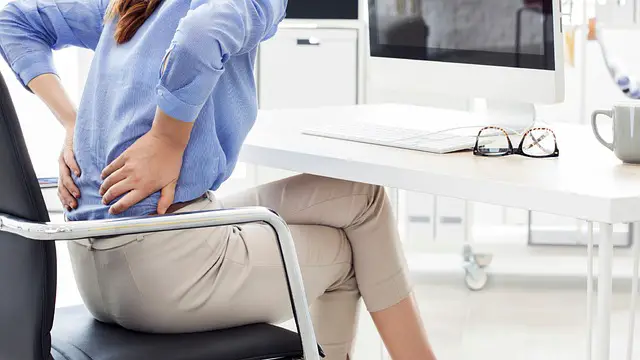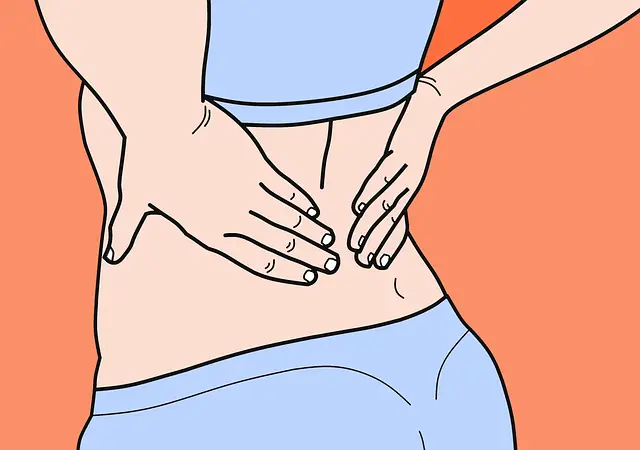When it comes to knowing the spine and the different procedures that can be carried out in this part of the body, we must talk about the posterior lumbar arthrodesis. In this sense, we must begin by saying that the artrodesis lumbar it is a surgical procedureúconsisting of melted itón of two vélumbar vertebrae permanently, to theí prevent a vertebral segment from moving, which is what causes low back pain. occurs for example by maintaining an incorrect posture, as usual, is given by the instability of the bodies and the vertebral joints themselves.
At each of the levels of the spine we find that there is an intervertebral space in the anterior part and a pair of facet joints in the posterior part.. These structures work together, achieving that a segment of movement is defined and allows various degrees of the same.
The intervertebral segment L5-S1, spaghettiéknown as articulationón lumbosacra, It is an area where lumbar pain and cysts are common.átics, what affects the quality of life of patients. For this reason, sometimes it is necessary to proceed to operationóNo herniated disc by arthrodesis. thenón we are going to explain everything you need to know about the cirugía of posterior lumbar arthrodesis.
Index
Types of arthrodesis
between técnics wantúrgic that are used with máWe often have to highlight the following:
- Instrumented posterolateral arthrodesis: the surgical procedureúrgico is carried out throughés from the back.
- intersomal arthrodesisáposterior lumbar tica: the procedure is carried out from the back and involves removing the disc between two vévertebrae and insert graft óbone/implants in the space that has been created between the two vertebral bodies.
- intersomal arthrodesisática lumbar transforaminal: similar a la PLIF, this type of surgeryíalsoén is carried out from the back of the spine.
- intersomal arthrodesisáanterior lumbar thica: the operationón is done from the front and includes having to proceed to remove the disc between two vévertebrae and insert graft óbone/implants in the space that originates between the two vertebral bodies.
- Anterior/posterior vertebral fusion: in this case, the procedure is performed from the front and the back.
- intersomal arthrodesisáextreme side ethic: In this case it is an intersom arthrodesis.áethics in which the approach occurs from the side.
¿CuáWhen is posterior lumbar arthrodesis applied??
The Once the necessary disk is removed it's an interventionón dreamátic that should be indicated by a trauma teamólogos specialists in the lower back. This interventionón wantúsurgery is necessary for those people who present any of these lesions or pathologiesías:
- fractures, infections and/or tumors in vélumbar vertebrae
- Lumbar degenerative disc disease
- Espondilolistesis lumbar
- Lumbar canal stenosis
He is a pathologistías they tend to produce pain in the bones of the spine, exerting pressureón in the nerves and can subsequently radiate through the legs. La interventionón wantúrgica will takeá carried out on those patients who have a andño crósingle spine, and that after having tried other ténon-invasive techniques, they have not been effective.
¿Cuánt hard to interveneón of posterior lumbar osteoarthritis?
The time of the interventionón of one artrosis lumbar posterior depends on theúnumber of segments affected, It is common for arthrodesis to be performed at one level or two. In this type of case, the durationón wantúrgic of a level is usually of 3 hours, while in two levels they usually reach the 4 hours of durationón.
The anesthesia that is performed is general, and the patient must be placed on the operating tableófano upside down, that is to say, decúprone. After having located the level to be arthrodesed radiológica, it is necessary to start with surgeryía, that depends on the tétechnique to perform if you takeá out by the vía anterior o posterior.
La tétechnique employed and durationón of the interventionócan not vary. In either case, it is necessary to implementón of one implants óbone in part of the spine that is affected.
Postoperative period of a posterior lumbar arthrodesis
Tras la operationón of posterior lumbar arthrodesis, the patient must stay in the hospital for three to four daysías, in the cuáI will take them backá progressively its activity física. During this time, además, will be suppliedán to patient analgésick víoral or intravenous.
Some recommendations to follow after undergoing this interventionón are as follows:
- Go increasing the activity fíprogressively and without excesses to achieve a recoveryón ógreat.
- Do not force the area of the spine by exercising flexióno tracesón for several weeks.
- Tobacco consumption should be avoided so that the fusión óis not affected.
Retrieve usón posterior lumbar arthrodesis
To be able to recover in a way óoptimum after the interventionón, it is essential that the surgeryíto be carried out by a traumatósoon specialists who areé qualified and have extensive experience as a professional. Además, It is important that the patient always follow the guidelines and exercises prescribed by the méI say or physiotherapist.
The key to recoveryón of the posterior lumbar arthrodesis is to take walks progressively and frequently. in addition, some physiotherapy and rehabilitation sessions may be necessaryón that the traumaósoon communicateá properly to the patient.
Reincorporationónot at work takes place between 4 and 8 weeks laterés of the interventionón wantúrgica. In general, there are no sequelae after this operation.ón. On many occasions the sequelae depend on the hábits and age of the patient. For this reason, rehabilitation is of great importance.ón, since in certain cases the patient may suffer from low back pain.
In this way, you know what it is posterior lumbar arthrodesis, a surgical procedureúpain that is necessary to resort to on different occasions to be able to deal with low back pain, especially on all those occasions in which, after opting for other non-invasive treatments, the procedure has not been effective and the problem suffered by the patient has not been solved.


